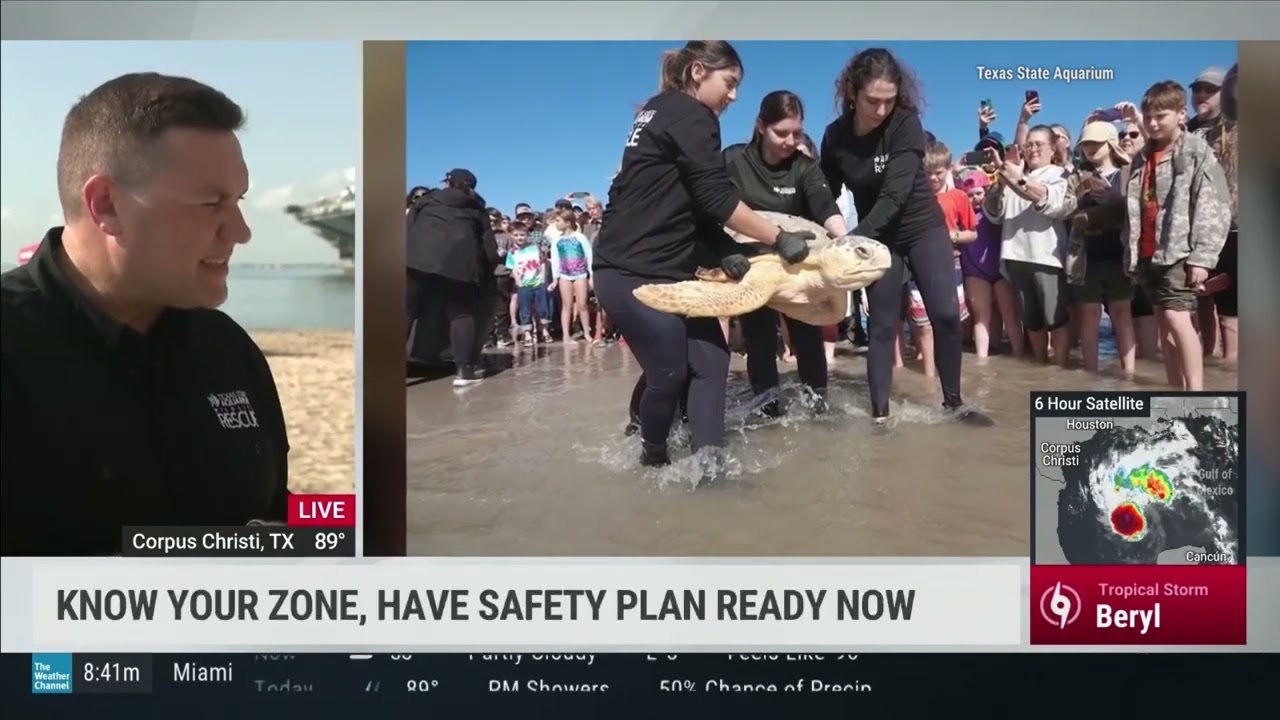- Overview of Hurricane Beryl’s impact and the Texas State Aquarium’s Response Operations
- Insights into zoo management and wildlife conservation strategies during emergencies
- Role of the Weather Channel’s Weekend Recharge program in public education and awareness
- Understanding the biological and ecological characteristics of affected wildlife
- Innovative rehabilitation techniques and long-term conservation efforts
Hurricane Beryl was a significant weather event that put pressure on not only human infrastructure but also wildlife habitats, particularly in coastal regions. The Texas State Aquarium’s Wildlife Response Operations played a pivotal role in tackling the challenges that arose in the aftermath of the storm. This article delves into the multi-faceted approach taken by both the team at the aquarium and the Weather Channel’s Weekend Recharge program to educate the public and facilitate effective wildlife conservation strategies.
The Texas State Aquarium, situated along the Gulf Coast, found itself in the pathway of Hurricane Beryl. The immediate challenge was to protect both the resident animals and the wild creatures affected by the storm. With preparedness at the forefront, the aquarium implemented a detailed emergency response plan to safeguard wildlife. This included measures for evacuation, the provision of secure shelter for animals, and a plan for streamlined communication with local and national rescue teams.
Zoo management during a crisis is a balancing act of logistics, scientific management, and compassion. The Texas State Aquarium exemplified exceptional leadership during Hurricane Beryl, utilizing crisis management protocols that include rapid evacuation and recovery strategies. These protocols are informed by years of data collection on animal behavior during stressed conditions. Understanding animal psychology is paramount, as stress can exacerbate health issues in both terrestrial and aquatic specimens.
Moreover, wellness checks were conducted frequently post-storm, ensuring all creatures received necessary medical attention. The role of veterinary sciences in such emergencies cannot be understated, with veterinarians working tirelessly to address physical traumas and secondary infections. These health assessments were crucial for the ongoing health of individual animals and for preserving entire species threatened by environmental disruptions.
Forming a critical component of public outreach and education, the Weather Channel’s Weekend Recharge program highlighted the aquarium’s efforts. By broadcasting the operations and ongoing rehabilitation initiatives, they significantly contributed to raising awareness about the impact of such natural events on wildlife and ecological systems. The educational segments provided viewers with insights into how professional teams handle the complexities of wildlife emergencies, emphasizing the need for comprehensive conservation strategies.
Education efforts extended beyond immediate storm response. Viewers were informed about the broader ecological implications of hurricanes, particularly on marine biodiversity. The discussions facilitated by Weather Channel experts helped disseminate crucial information about the interrelationships between climate change and its repercussions on wildlife. This contribution played a vital role in fostering a more environmentally conscious public narrative.
Hurricane Beryl served as a case study in understanding how ecological systems are affected by such climatic events. Sea turtles, an important emblem of the Gulf ecosystem, were among the species impacted. The behavioral ecology of these reptiles during storms demonstrates their vulnerabilities and adaptive strategies. By studying nesting sites pre- and post-storm, researchers gathered valuable data on shifts in turtle populations and the lasting impacts on their habitats.
Similarly, avian species residing in coastal habitats required immediate attention. The strategic interventions implemented to ensure the safety of birds included the erection of temporary shelters and rapid response feeding programs. Understanding avian migratory patterns was crucial to predicting and managing post-storm movements. The conservation strategies focused on habitat restoration post-disaster emphasized the critical need for resilient ecosystems that can withstand future weather perturbations.
The Texas State Aquarium not only responded to the immediate crisis but also committed to long-term wildlife rehabilitation efforts. This commitment includes habitat restoration projects, advocacy for sustainable development practices, and partnership with scientific bodies to monitor ecological health. The amalgamation of conservation science and practical management underscores a proactive approach to wildlife stewardship.
In conclusion, Hurricane Beryl and the ensuing response by the Texas State Aquarium and highlighted by the Weather Channel’s Weekend Recharge program depict a dedicated effort to protect and conserve wildlife. The coordination between emergency management, community engagement, and relentless scientific inquiry presents a blueprint for future wildlife conservation endeavors. As environmental challenges become increasingly frequent, such coordinated efforts will remain pivotal in fostering a more resilient and informed community ready to tackle the ecological impacts of natural events.
*****
Source Description
President and CEO Jesse Gilbert speaks to Molly McCollum about the Aquarium’s Wildlife Response Operations preparations in anticipation of Hurricane Beryl.


